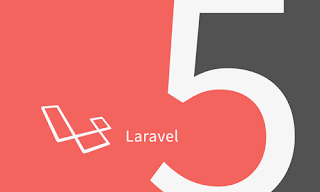Real time chat using Node.js, Socket.io, ExpressJS:
For creating a real time chat you have to do some following steps:
Setup Environment
Of course, the first thing to do is get NodeJS installed on your system.Once you have NodeJS installed, you're ready to setup the needed instruments.
ExpressJS - this will manage the server and the response to the user
Jade - template engine
Socket.io - allows for real time communication between the front-end and back-end
Continuing on, within an empty directory, create a package.json file with the following content.
{
"name": "RealTimeWebChat",
"version": "0.0.0",
"description": "Real time web chat",
"dependencies": {
"socket.io": "latest",
"express": "latest",
"jade": "latest"
},
"author": "developer"
}
By using the Terminal (under Windows - command prompt), navigate to your folder and execute:
npm install
Within a few seconds, you'll have all the necessary dependencies downloaded to the node_modules directory
Developing the Backend
Let's begin with a simple server, which will deliver the application's HTML page, and then continue with the more interesting bits: the real time communication. Create an index.js file with the following core expressjs code:
var express = require("express");
var app = express();
var port = 3700;
app.get("/", function(req, res){
res.send("It works!");
});
app.listen(port);
console.log("Listening on port " + port);
Above, we've created an application and defined its port. Next, we registered a route, which, in this case, is a simple GET request without any parameters. For now, the route's handler simply sends some text to the client. Finally, of course, at the bottom, we run the server. To initialize the application, from the console, execute:
node index.js
The server is running, so you should be able to open http://127.0.0.1:3700/ and see:
It works!
Now, instead of "It works" we should serve HTML. Instead of pure HTML, it can be beneficial to use a template engine. Jade is an excellent choice, which has good integration with ExpressJS. This is what I typically use in my own projects. Create a directory, called tpl, and put the following page.jade file within it:
<!DOCTYPE html>
html
head
title= "Real time web chat"
body
#content(style='width: 500px; height: 300px; margin: 0 0 20px 0; border: solid 1px #999; overflow-y: scroll;')
.controls
input.field(style='width:350px;')
input.send(type='button', value='send')
The Jade's syntax is not so complex, but, for a full guide, I suggest that you refer to jade-lang.com. In order to use Jade with ExpressJS, we require the following settings.
app.set('views', __dirname + '/tpl');
app.set('view engine', "jade");
app.engine('jade', require('jade').__express);
app.get("/", function(req, res){
res.render("page");
});
This code informs Express where your template files are, and which template engine to use. It all specifies the function that will process the template's code. Once everything is setup, we can use the .render method of the response object, and simply send our Jade code to the user.
The output isn't special at this point; nothing more than a div element (the one with id content), which will be used as a holder for the chat messages and two controls (input field and button), which we will use to send the message.
Because we will use an external JavaScript file that will hold the front-end logic, we need to inform ExpressJS where to look for such resources. Create an empty directory, public, and add the following line before the call to the .listen method.
app.use(express.static(__dirname + '/public'));
So far so good; we have a server that successfully responds to GET requests. Now, it's time to add Socket.io integration. Change this line:
app.listen(port);
to:
var io = require('socket.io').listen(app.listen(port));
Above, we passed the ExpressJS server to Socket.io. In effect, our real time communication will still happen on the same port.
Moving forward, we need to write the code that will receive a message from the client, and send it to all the others. Every Socket.io application begins with a connection handler. We should have one:
io.sockets.on('connection', function (socket) {
socket.emit('message', { message: 'welcome to the chat' });
socket.on('send', function (data) {
io.sockets.emit('message', data);
});
});
The object, socket, which is passed to your handler, is actually the socket of the client. Think about it as a junction between your server and the user's browser. Upon a successful connection, we send a welcome type of message, and, of course, bind another handler that will be used as a receiver. As a result, the client should emit a message with the name, send, which we will catch. Following that, we simply forward the data sent by the user to all other sockets with io.sockets.emit.
With the code above, our back-end is ready to receive and send messages to the clients. Let's add some front-end code.
Developing the Front-end
Create chat.js, and place it within the public directory of your application. Paste the following code:
window.onload = function() {
var messages = [];
var socket = io.connect('http://localhost:3700');
var field = document.getElementById("field");
var sendButton = document.getElementById("send");
var content = document.getElementById("content");
socket.on('message', function (data) {
if(data.message) {
messages.push(data.message);
var html = '';
for(var i=0; i<messages.length; i++) {
html += messages[i] + '<br />';
}
content.innerHTML = html;
} else {
console.log("There is a problem:", data);
}
});
sendButton.onclick = function() {
var text = field.value;
socket.emit('send', { message: text });
};
}
Our logic is wrapped in a .onload handler just to ensure that all the markup and external JavaScript is fully loaded. In the next few lines, we create an array, which will store all the messages, a socket object, and few shortcuts to our DOM elements. Again, similar to the back-end, we bind a function, which will react to the socket's activity. In our case, this is an event, named message. When such an event occurs, we expect to receive an object, data, with the property, message. Add that message to our storage and update the content div. We've also included the logic for sending the message. It's quite simple, simply emitting a message with the name, send.
If you open http://localhost:3700, you will encounter some errors popup. That's because we need to update page.jade to contain the necessary JavaScript files.
head
title= "Real time web chat"
script(src='/chat.js')
script(src='/socket.io/socket.io.js')
Notice that Socket.io manages the delivery of socket.io.js. You don't have to worry about manually downloading this file.
We can again run our server with node index.js in the console and open http://localhost:3700. You should see the welcome message. Of course, if you send something, it should be shown in the content's div. If you want to be sure that it works, open a new tab (or, better, a new browser) and load the application. The great thing about Socket.io is that it works even if you stop the NodeJS server. The front-end will continue to work. Once the server is booted up again, your chat will be fine too.














